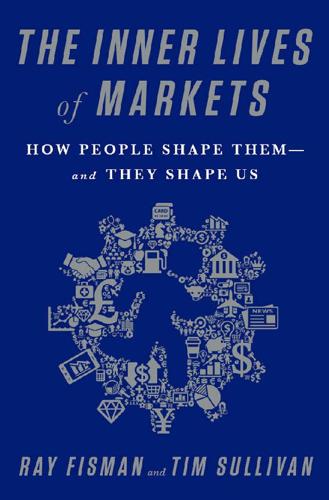
The Inner Lives of Markets: How People Shape Them—And They Shape Us
by
Tim Sullivan
Published 6 Jun 2016
Vickrey’s classic auction study similarly began with a precise explanation of what was wrong with the standard first-price sealed-bid auction that was standard practice in procurement auctions for everything from highways to school supplies, the same mechanism that was used to sell Matsuzaka’s contract. By the time he was done, he’d unwittingly reinvented the stamp collectors’ auction of choice and laid the foundations for the field of auction design in the process. Vickrey described what he thought was a better way: the second-price sealed-bid auction, which is now known simply as a Vickrey auction. Then he proved mathematically that it just might be the best of all possible auctions that one could devise.
…
Before any team could even start negotiating with Matsuzaka’s agent, the Red Sox would need to pay the Lions to release him from his contract. This was a result of the “posting system” created in the late 1990s, under which a Japanese player hoping to move to the United States would notify his team of his intentions.1 Each interested MLB team had one chance to put in its best offer—a so-called sealed-bid auction. The highest bidder would win the right to negotiate a contract with the player. If the negotiations didn’t lead to an agreement within thirty days, the player would return to his team in Japan, and no money would change hands. If the deal got done, the winning bidder would be on the hook for the posting fee to the Japanese team, in addition to whatever salary the team had agreed to pay the player.
…
It turned out there was, in the form of a mechanism that had been designed over a hundred years ago by stamp dealers to sell collections via mail-in auctions and that had been independently discovered and analyzed by a brilliant Columbia University economist nearly half a century before Matsuzaka’s ill-fated sale to the Red Sox. Curiously, this different approach to auctions was almost exactly the same as the standard sealed-bid auction, with one small twist. Instead of paying the winning bid, the auction winner pays the price offered by the runner-up. But that one small tweak to the auction rules turns out to make a bidder’s job a lot simpler, so much so that just a dozen or so years ago—as the internet revolution was gathering momentum—some thought that it would revolutionize the very nature of commerce.
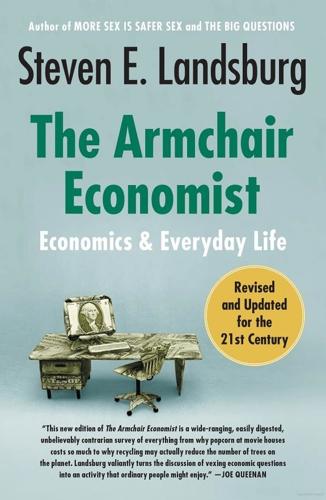
The Armchair Economist: Economics and Everyday Life
by
Steven E. Landsburg
Published 1 May 2012
There is the Dutch auction, where an auctioneer calls out a very high price and successively lowers it until he receives an offer to buy. There is the first-price sealed bid auction, where each buyer submits a bid in an envelope, all are opened simultaneously, and the high bidder gets the item for the amount of his bid. There is the second-price sealed bid auction, where the high bidder gets the item but pays only the amount of the second-highest bid. There are third-, fourth-, and fifth-price sealed bid auctions. And there are more exotic possibilities. In the Glum Losers auction, the high bidder gets the item for free and everybody else pays the amount of his own bid.
…
Under certain reasonable assumptions (about which I will soon say more), and as a matter of mathematical fact, all of the auction rules I've mentioned yield the same revenue to the seller on average over many auctions. If I regularly sell merchandise at English auctions, while you sell at Dutch auctions, your brother sells at first-price sealed bid auctions, your sister sells at second-price sealed bid auctions, and your crazy Uncle Fester sells at Glum Losers auctions, and if we all sell merchandise of comparable quality, then in the long run we must all do equally well. This result applies as well to a vast number of other auction rules—in fact, to any rule you can imagine that does not involve some entrance fee to the auction hall or its equivalent.
…
The answer is yes if there happen to be two high bidders in the audience and no if Cursed Winners and Glum Losers 177 there happens to be just one. Because bidders are unlikely to reveal their bidding strategies in advance of the auction, the seller can never know for certain on any given night whether an English auction is preferable to, say, a Dutch auction. Even to decide between a first-price and a second-price sealed bid auction can be difficult for the seller. On the one hand, in a first-price auction he collects the high bid, while in a second-price auction he collects only the amount of the second-highest bid. On the other hand, bidders generally submit higher bids in a second-price auction. They submit even higher bids in a third-price auction.

Who Gets What — and Why: The New Economics of Matchmaking and Market Design
by
Alvin E. Roth
Published 1 Jun 2015
Goods ranging from works of art to cattle are often sold in “ascending bid” auctions, in which the auctioneer calls out progressively higher prices, until only one bidder remains, and that bidder pays the last, highest price called by the auctioneer. Sometimes items are sold instead in “sealed bid” auctions: each bidder submits a bid without hearing the other bids, the bids are all opened at the same time, and the highest bidder wins, sometimes paying the amount of his bid and sometimes paying the amount of the second- highest bid. Paying the second-highest bid may sound odd, until you notice that in an ascending bid auction, the winning bidder pays the price at which the second-highest bidder dropped out. So in both an ascending bid auction and a second-price sealed bid auction, the highest bidder gets the object at the price just beyond what the second-highest bidder was willing to pay.
…
That’s because if you think of the winning bidder’s profit as what the object is worth to him minus what he has to pay for it (and each losing bidder’s profit as zero), it’s perfectly safe for bidders to bid the object’s full true value to them in a sealed bid auction, or to stay in an ascending bid auction until the auctioneer reaches the full amount they are willing to pay. Win or lose, a bidder can’t make a higher profit by bidding something else. That isn’t obvious at all, but if you think about it carefully, you’ll see why it’s true. Consider the second-price sealed bid auction, in which the high bidder receives the object and pays the second-highest bid, while the other bidders pay nothing and receive nothing.
…
In this environment, an ascending bid auction is different from a sealed bid auction, even a second-price auction, since when the bids are sealed, bidders can’t learn anything from how the other bidders behave. But in an ascending bid auction, when you see other bidders drop out, you know their estimates of the value aren’t as high as yours. That might tell you that your own estimate is unrealistic: if there was as much oil in the ground as your geologists estimated, other companies should have seen it, too. In contrast, a sealed bid auction, in which you can’t see when the other bidders drop out, might make it risky to bid at all, since a company with an unrealistically high estimate of how much recoverable oil is in the ground might suffer the “winner’s curse”—that is, win the auction only because it overestimated the value of winning and paid too much.

Networks, Crowds, and Markets: Reasoning About a Highly Connected World
by
David Easley
and
Jon Kleinberg
Published 15 Nov 2010
These auctions are called Dutch auctions because flowers have long been sold in the Netherlands using this procedure. 3. First-price sealed-bid auctions. In this kind of auction, bidders submit simultaneous “sealed bids” to the seller. The terminology comes from the original format for such auctions, in which bids were written down and provided in sealed envelopes to the seller, who would then open them all together. The highest bidder wins the object and pays the value of her bid. 4. Second-price sealed-bid auctions, also called Vickrey auctions. Bidders submit simultaneous sealed bids to the sellers; the highest bidder wins the object and pays the value of the second-highest bid.
…
Moreover, the fact that bidders want to remain in an ascending-bid auction up to exactly the point at which their true value is reached provides the intuition for what will be our main result in the next section: after formulating the sealed-bid second-price auction in terms of game theory, we will find that bidding one’s true value is a dominant strategy. Comparing Auction Formats. In the next two sections we will consider the two main formats for sealed-bid auctions in more detail. Before doing this, it’s worth making two points. First, the discussion in this section shows that when we analyze bidder behavior in sealed-bid auctions, we’re also learning about their interactive analogues — with the descending-bid auction as the analogue of the sealed-bid first-price auction, and the ascending-bid auction as the analogue of the sealed-bid second-price auction.
…
One of the most important results in auction theory is the fact we mentioned toward the end of the previous section: with independent, private values, bidding your true value is a dominant strategy in a second price sealed-bid auction. That is, the best choice of bid is exactly what the object is worth to you. Formulating the Second-Price Auction as a Game. To see why this is true, we set things up using the language of game theory, defining the auction in terms of players, strategies, and payoffs. The bidders will correspond to the players. Let vi be bidder i’s true value for the object. Bidder i’s strategy is an amount bi to bid as a function of her true value vi. In a second-price sealed-bid auction, the payoff to bidder i with value vi and bid bi is defined as follows.

A Little History of Economics
by
Niall Kishtainy
Published 15 Jan 2017
The auctioneer starts at a high price and then lowers it until someone offers to buy. Descending auctions are fast, and so are useful for selling flowers that need to be sold before they wilt. Houses are sometimes sold in ‘sealed-bid’ auctions in which each bidder submits a bid in a sealed envelope. The person with the highest bid pays the amount that they bid and gets the house. Imagine you’re taking part in a sealed-bid auction for a house which to you is worth £300,000. How much would you bid? Probably not £300,000. You’d be strategic about it and bid a bit lower, say £250,000, so that if you won you’d make a ‘profit’ of £50,000.
…
But the seller wants to get as high a price for the house as possible and so wants you to bid your true valuation of £300,000. In the 1960s the Canadian economist William Vickrey (1914–96) worked out an ingenious solution to the problem of shading. He devised a type of auction in which bidders have every incentive to be truthful. In standard sealed-bid auctions the winning bidders pay an amount equal to their own bid, the highest bid. Instead of the ‘first-price’ sealed-bid auction, Vickrey proposed a ‘second-price’ auction in which the winning bidder is the highest bidder but pays an amount equal to the second-highest bid. Suppose that in a second-price house auction you bid £250,000, rather than your true valuation of £300,000.
…
The catch with Vickrey’s auction is that the seller has to settle for an amount equal to the second highest rather than the highest bid. Which auction is the best? It depends. One factor is bidders’ attitudes to risk. People are commonly scared of risky situations – those in which they have a chance of winning a lot or winning nothing. Shading your bid in a first-price sealed-bid auction is risky. If you bid £250,000 for a house that you value at £300,000 then you might win and make a £50,000 profit, but you might be outbid and end up with nothing. If you hate risk you’ll tend to shade less, perhaps bidding £290,000. In the first-price auction your aversion to risk makes you bid close to your true valuation, and that’s what you’ll pay if you win.
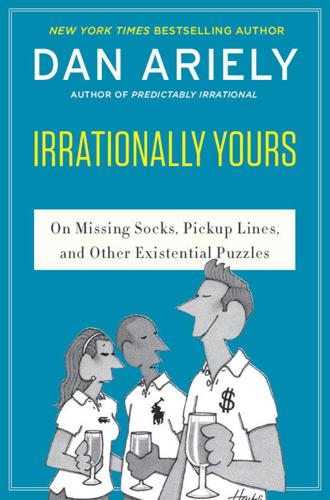
Irrationally Yours: On Missing Socks, Pickup Lines, and Other Existential Puzzles
by
Dan Ariely
and
William Haefeli
Published 18 May 2015
Friends, Misery, Communication ON PRICES AND BIDDING FRENZY Dear Dan, My parents are about to put their house on the market in Scotland. In the Scottish system the seller sets an asking price and interested parties make a one-time, sealed-bid offer. Once all the offers are gathered the seller picks one and the transaction is carried out. Any advice on how to get the highest sale price? —MOSES Sealed-bid auctions are simpler in many ways than live auctions, and they involve two basic forces: what the bidders think the house is worth for them, and how intense they think the competition will be. Establishing a high asking price has an opposite effect on these two forces. If you set a high asking price, there’s a good chance that people will start thinking about the house in the price range of the asking price and offer a higher bid.
…
(By the way, have you noticed that in auctions—on eBay for example—the person who pays for the item at the end of the auction is called “the winner”? This suggests that competition is indeed a very strong driver in auctions.) Now, the question is which of these two forces (starting perspective or competition) is stronger. I suspect that when the mechanism is a one-time, sealed-bid auction the most important element is the way people start thinking about the house, which suggests that you should go in with a high asking price. However, if you were in the United States, where the bidding mechanism involves multiple rounds, competition might be more important, which means that you would be better served by setting a lower asking price and getting more people to join the auction.
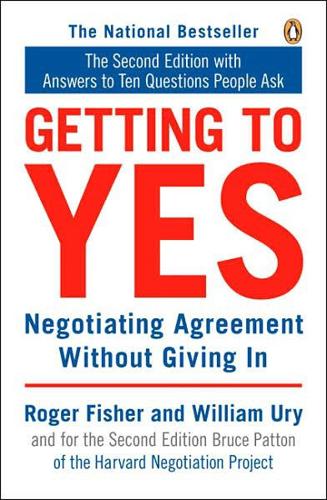
Getting to Yes: Negotiating Agreement Without Giving In
by
Roger Fisher
and
Bruce Patton
Published 15 Mar 1991
Sometimes this can be done by devising an ingenious process option. Consider the sealed-bid stamp auction. The auctioneer would like bidders to offer the most they might conceivably be willing to pay for the stamps in question. Each potential buyer, however, does not want to pay more than necessary. In a regular sealed-bid auction each bidder tries to offer slightly more than their best guess of what others will bid, which is often less than 87 the bidder would be willing to pay. But in a stamp auction the rules are that the highest bidder gets the stamps at the price of the second highest bid. Buyers can safely bid exactly as much as they would be willing to pay to get the stamps, because the auctioneer guarantees that they will not have to pay it!
…
No bidder is left wishing that he or she had bid more, and the high bidder is happy to pay less than was offered. The auctioneer is pappy knowing that the difference between the highest and second highest bids is usually smaller than the overall increase in the level of bids under this system versus a regular sealed-bid auction.* There is power in using external standards of legitimacy. You can use standards of legitimacy both as a sword to persuade others, and as a shield to help you resist pressure to give in arbitrarily. ("I would like to give you a discount, but this price is firm. It is what General Motors paid for the same item last week; here is the bill of sale.")
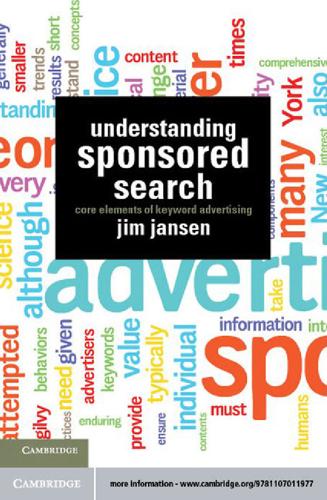
Understanding Sponsored Search: Core Elements of Keyword Advertising
by
Jim Jansen
Published 25 Jul 2011
In the earliest form of sponsored search [8], from GotTo.com, the keyphrase auction was standard in that the highest bidder was always the winner. However, most sponsored-search auctions are now nonstandard auctions, where the winner of the auction is not always the bidder with the highest bid. More on that later. Most sponsored-search auctions are also sealed-bid auctions, where the amount of the bids of one participant is not known to the other market participants. This is different from an open auction (e.g., a cattle auction or an auction at Sotheby’s), where everyone participating knows all the bids. The original sponsored-search auction was an open auction (see Chapter 2 overview of sponsored search).
…
Now that we know how the sponsored-search auction works, let us examine the theoretical underpinning of such auctions. The theoretical basis for the sponsored-search auction is the Generalized Second Priced (GSP) auction. The Vickrey auction is the ideal form of GSP auction, so we start here with a brief discussion of the ideal form. A Vickrey auction A Vickrey auction is a type of sealed-bid auction where bidders submit bids without knowing the bid of the other people in the auction. The highest bidder wins, but the bidder pays the amount of the second-highest bid. Very similar to the Standard English auction that one might see at a livestock sale, where all bids are public and known by all, the Vickrey auction gives bidders an incentive to bid their true value.
…
However, if the auction is in equilibrium, there is no winner’s curse because the bidders account for this effect in their own bids and adjust accordingly. Therefore, each bid represents the true valuation of the resources by the buyer. The pure Vickrey auction deals with auctions where a single good is being sold (i.e., a second-price sealed-bid auction). When multiple identical resources are for sale, things get more complex, and one can apply the same payment principal (i.e., have all winning bidders pay the amount of the highest nonwinning bid). This is known as a uniform price auction. Unfortunately, this situation does not result in bidders bidding their true valuations in most situations, and the auction does not reach stability.

The Undercover Economist: Exposing Why the Rich Are Rich, the Poor Are Poor, and Why You Can Never Buy a Decent Used Car
by
Tim Harford
Published 15 Mar 2006
The auctions were held without making sure that there was any interest from bidders, without minimum prices, and using a theoretical curiosity called a “Vickrey auction,” which led to considerable embarrassment. (The auction was named after its inventor, Nobel laureate William Vickrey, who made major early advances in applying game theory to auctions.) The Vickrey auction is a second-price sealed-bid auction. The “sealed bid” means that each bidder writes down a single bid and seals it in an envelope. When the envelopes are opened, the highest bidder wins. “Second-price” is the curious rule that the winner pays not his bid but that of the second-highest bidder. The elegant reasoning behind this auction is that no bidder ever has an incentive to shave his bid in an effort to make more profit; making a lower bid affects his chance of winning but not the price.
…
Perhaps it was pride: nobody wanted to be the first to drop out, but once Crescent quit, others who had been waiting for the chance also quit soon after. Game theorists have an alternative explanation: bidders were learning from each others’ bids about what the 3G licenses were likely to be worth. This was one of the advantages of the auction’s transparent design. A commonly used alternative would simply have been to run a “sealed bid” auction where everyone handed • 171 • T H E U N D E R C O V E R E C O N O M I S T in an envelope containing a single bid. But such an auction would have left every bidder guessing in the dark, probably leading to much more conservative bidding and a much less profitable outcome for the government.
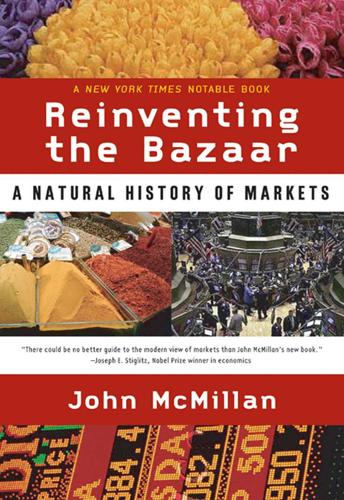
Reinventing the Bazaar: A Natural History of Markets
by
John McMillan
Published 1 Jan 2002
Most auctions use an open auction, as is traditionally used to sell art and antiques, in which the bidders go on topping each others’ bids until only one wants to continue. An alternative way of running the bidding is the Dutch auction, used to sell flowers at Aalsmeer, in which the price starts high and falls until a bidder claims the item. Another is the sealed-bid auction, in which there is a single round of sealed bids; the high bidder wins and pays his or her bid. Commercial real estate is sometimes sold this way. A variant is the second-price auction, in which there is a single round of bidding and the high bidder wins, but unlike first-price auctions, the price paid is the second-highest bid.
…
In turn, buyers go where the sellers already are, which makes the site still more attractive to sellers. Since eBay was there first, the network externality helps make its success self-perpetuating. Myriad auction mechanisms can be found on the various online auction sites. Dutch auctions are used to sell containers on oceangoing cargo vessels. Sealed-bid auctions are used for selling vacation time-shares. A few sites allow package bidding. One wine auction site, for example, packages bottles into sets (usually different vintages from a particular vineyard). It then accepts not only bids on the individual bottles but also all-or-nothing bids on the package.

Algorithms to Live By: The Computer Science of Human Decisions
by
Brian Christian
and
Tom Griffiths
Published 4 Apr 2016
This seems to offer something closer to what we want: here, if you value an item at $25 and I value it at $10, you’ll win it for just over $10 without either having to go all the way to $25 or disappearing down the strategic rabbit hole. Both the Dutch auction and English auction introduce an extra level of complexity when compared to a sealed-bid auction, however. They involve not only the private information that each bidder has but also the public flow of bidding behavior. (In a Dutch auction, it is the absence of a bid that reveals information, by making it clear that none of the other bidders value the item at the current price level.) And under the right circumstances, this mixing of private and public data can prove toxic.
…
But the situation is not completely hopeless. In fact, there’s one auction design in particular that cuts through the burden of mental recursion like a hot knife through butter. It’s called the Vickrey auction. Named for Nobel Prize–winning economist William Vickrey, the Vickrey auction, just like the first-price auction, is a “sealed bid” auction process. That is, every participant simply writes down a single number in secret, and the highest bidder wins. However, in a Vickrey auction, the winner ends up paying not the amount of their own bid, but that of the second-place bidder. That is to say, if you bid $25 and I bid $10, you win the item at my price: you only have to pay $10.
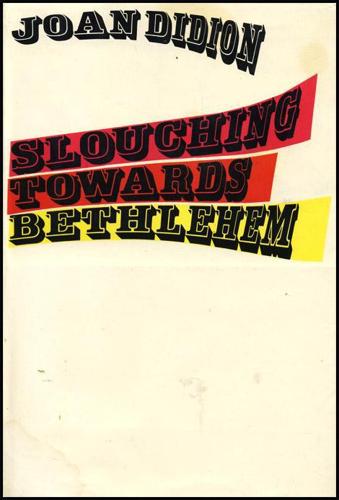
Slouching Towards Bethlehem
by
Joan Didion
Published 1 Jan 1968
No one else comes out there except a man from the General Services Administration named Thomas Scott, who brings out an occasional congressman or somebody who wants to buy the island or, once in a while, his wife and small son, for a picnic. Quite a few people would like to buy the island, and Mr. Scott reckons that it would bring about five million dollars in a sealed-bid auction, but the General Services Administration is powerless to sell it until Congress acts on a standing proposal to turn the island into a “peace park.” Mr. Scott says that he will be glad to get Alcatraz off his hands, but the charge of a fortress island could not be something a man gives up without ambivalent thoughts.

Never Let a Serious Crisis Go to Waste: How Neoliberalism Survived the Financial Meltdown
by
Philip Mirowski
Published 24 Jun 2013
Unfortunately, the market designers responded to the Treasury’s call for assistance by submitting widely incompatible designs for the auctions, necessitating the Treasury to decide between the rival analyses. By itself, the presence of rival proposals was not an insuperable obstacle, but complicating matters was that from the perspective of the Treasury one could not tell on paper what the best auction form was.132 For example, one dispute broke out over whether to run an “open” or “sealed bid” auction. This had historically been one of the most basic issues that market designers grapple with, and, yet, one proposal called for an “open” auction, yet another for a “closed” auction. Which one was to be preferred was supposed to turn on which mechanism did the best job of aggregating information, but theory provided neither guidance about which form was better, nor guidance about whether either form would bring new bits of useful information into the market.
…
As a result, common-value uncertainty is reduced and bidders will be comfortable bidding more aggressively without falling prey to the winner’s curse—the tendency in a procurement setting of naïve sellers to sell at prices below true value . . . A principal benefit of the clock auction is the inherent price-discovery feedback mechanism that is absent in any sealed-bid auction format. Specifically, as the auction progresses, participants learn how the aggregate demand changes with price, which allows bidders to update their own strategies and avoid the winner’s curse . . . Efficiency in the clock auction always exceeded 97%.138 This passage corresponds to the point made above, that market designers viewed the toxic assets as “common” or objectively valued, and that such cases posed for the market designer the task of figuring out how to aggregate information.

The Darwin Economy: Liberty, Competition, and the Common Good
by
Robert H. Frank
Published 3 Sep 2011
“Exploring the Role of Pricing as a Congestion Management Tool,” Searching for Solutions: A Policy Discussion Series, No. 1, Federal Highway Administration and Federal Transit Administration, Washington, D.C., July 23, 1991. 5. See, for example, Michael O’Hare, Lawrence Bacow, and Debra Sanderson, Facility Siting and Public Opposition, New York: Van Nostrand Reinhold, 1983; and Howard Kunreuther and Paul Kleindorfer, “A Sealed-Bid Auction Mechanism for Siting Noxious Facilities,” American Economic Review 76(2), May 1986: 295–299. Chapter Eight: “It’s Your Money . . .” 1. Liam Murphy and Thomas Nagel, The Myth of Ownership, New York: Oxford University Press, 2001. 2. Liam Murphy and Thomas Nagel, “Tax Travesties,” Boston Globe, January 26, 2003, http://brothersjuddblog.com/archives/2003/01/we_hold_these_suggestions_to_b_1 .html. 3.
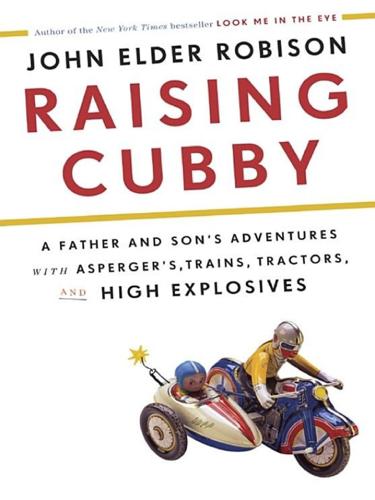
Raising Cubby: A Father and Son's Adventures With Asperger's, Trains, Tractors, and High Explosives
by
John Elder Robison
Published 12 Mar 2013
So we would climb into my old white Rolls-Royce for the fifteen-minute drive to the Depot Restaurant. I was real proud of that Rolls, and I loved to take Cubby places in it. Cubby liked it too, for the leathery smell and the soft lamb’s-wool carpets. I’d bought it the year before, when a bank foreclosed on a real estate speculator and they put his car on the block. I’d won the car in a sealed bid auction and had fixed it in my spare time at work. The ten grand I bid was a lot of money for me at the time, but I borrowed it from a bank, not a loan shark, and I paid it off within a year. My vintage Rolls was one of the first signs that I was finally making it. After all the money I’d lost, I sure felt I’d earned it.
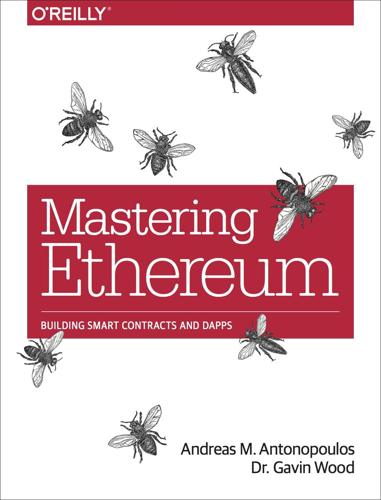
Mastering Ethereum: Building Smart Contracts and DApps
by
Andreas M. Antonopoulos
and
Gavin Wood Ph. D.
Published 23 Dec 2018
Because you can’t hide secrets on a blockchain, bidders must execute at least two transactions (a commit–reveal process), in order to hide the original value and name they bid on. Since you can’t reveal all bids simultaneously in a decentralized system, bidders must reveal their own bids themselves; if they don’t, they forfeit their locked-up funds. Without this forfeit, one could make many bids and choose to reveal only one or two, turning a sealed-bid auction into a traditional increasing price auction. Therefore, the auction is a four-step process: Start the auction. This is required to broadcast the intent to register a name. This creates all auction deadlines. The names are hashed, so that only those who have the name in their dictionary will know which auction was opened.

King of Capital: The Remarkable Rise, Fall, and Rise Again of Steve Schwarzman and Blackstone
by
David Carey
Published 7 Feb 2012
Rather than reveal the bids, he kept the amounts under wraps and proceeded to arrange a second round of sealed bids. He hoped to convince Morris that Cox and Gannett were hot on its heels. The stratagem worked, as Morris hiked its offer by $15 million. “That was $15 million Steve got for CSX that nobody else, including CSX, had the guts to do,” says Schlosstein. Today sealed-bid auctions for companies are the norm, but then they were exceedingly rare. “We made it up as we went along,” says Schwarzman, who credits himself with pioneering the idea. As the economy emerged from a grueling recession in the early 1980s, Lehman’s banking business took off and its traders racked up bigger and bigger profits playing the markets.

Model Thinker: What You Need to Know to Make Data Work for You
by
Scott E. Page
Published 27 Nov 2018
Arthur, W. B. 2011. The Nature of Technology: What It Is and How It Evolves. New York: Free Press. Ashenfelter, Orley. 2010. “Predicting the Quality and Prices of Bordeaux Wine.” Journal of Wine Economics 5, no. 1: 40–52. Athey, Susan, Jonathan Levin, and Enrique Seira. 2011. “Comparing Open and Sealed Bid Auctions: Evidence from Timber Auctions.” Quarterly Journal of Economics 126, no. 1: 207–257. Austin, David. 2008. “Percolation: Slipping Through the Cracks.” American Mathematical Society. www.ams.org/publicoutreach/feature-column/fcarc-percolation. Axelrod, Robert. 1984. The Evolution of Cooperation.
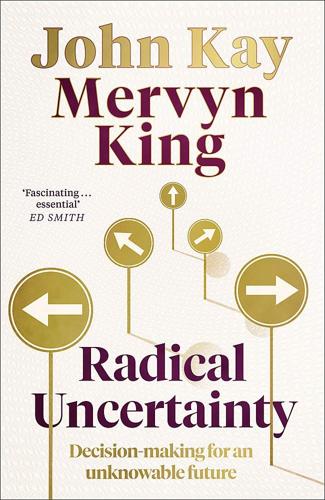
Radical Uncertainty: Decision-Making for an Unknowable Future
by
Mervyn King
and
John Kay
Published 5 Mar 2020
It led to a substantial fine from the Financial Services Authority and was described as ‘knuckleheaded’ by the bank’s CEO. 14 There are several ways of conducting auctions. The most common is to sell through open bidding, in which prices rise until only one prospective purchaser is left. eBay uses a variant of this method. A second is a sealed bid auction, often used in competitive tendering for public contracts, in which contenders submit their proposals and on a specified day the envelopes are opened and the lowest bidder is awarded the contract. An alternative sealed bid procedure gives the contract to the lowest bidder, but at the price offered by the runner-up.

Artificial Intelligence: A Modern Approach
by
Stuart Russell
and
Peter Norvig
Published 14 Jul 2019
This is offset by the fact that the auction is more competitive, reducing the bias toward an advantaged bidder. A small change in the mechanism for sealed-bid auctions leads to the sealed-bid second-price auction, also known as a Vickrey auction.5 In such auctions, the winner pays the price of the second-highest bid, bo, rather than paying his own bid. This simple modification completely eliminates the complex deliberations required for standard (or first-price) sealed-bid auctions, because the dominant strategy is now simply to bid vi; the mechanism is truth-revealing. Note that the utility of agent i in terms of his bid bi, his value vi, and the best bid among the other agents, bo, is To see that bi = vi is a dominant strategy, note that when (vi – bo) is positive, any bid that wins the auction is optimal, and bidding vi, in particular wins the auction.
…
Another negative property of the English auction is its high communication costs. Either the auction takes place in one room or all bidders have to have high-speed, secure communication lines; in either case they have to have time to go through several rounds of bidding. An alternative mechanism, which requires much less communication, is the sealed-bid auction. Each bidder makes a single bid and communicates it to the auctioneer, without the other bidders seeing it. With this mechanism, there is no longer a simple dominant strategy. If your value is vi, and you believe that the maximum of all the other agents’ bids will be bo, then you should bid , for some small ϵ, if that is less than vi,.